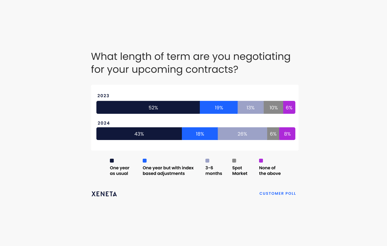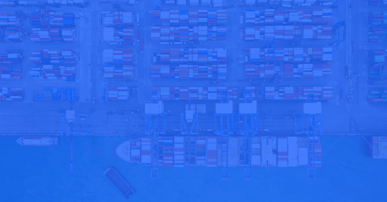The box rate collapse should not have taken anyone by surprise. Maybe the timing of its fall was worth discussing, but in the scheme of economic bubbles, the question was always 'when' instead of 'if.'
From the Dutch Tulip Bubble (1636-1637) to the Gold & Silver Bubble (1979-1980) to the American Housing Bubble (2002-2008), prices increased astronomically. We now have the Box Rate Bubble (2020-2022) to add to the Economic Hall of Shame.
The carriers are trying to halt, or at least slow down, the precipitous container rate collapse by slow-steaming, canceled loops, and other sorts of capacity management. But the historic supply & demand ratio between cargo and containers now favors the shippers.
In a report released January 9 by America's National Retail Foundation and Hackett Associates, American monthly box imports in the twelve largest American posts USWC/G/EC have fallen. It dropped from a May 2021 high of 2.4 million TEU/s monthly to a Covid-era low of 1.78 million in November 2022. They also forecast February 2023 to fall to 1.63 million TEUs and then rise in March, April, and May.
Worth remembering is that TEU volumes into the United States and EU were rising annually. Hackett Associates documents 2010 imports of 15.4 million TEUs into the US and rising to a 2021 high of 25.8 million. That's a 67% increase over eleven years.
There seem to be two significant differences between the speed at which rates rose during 2020-2021. During Covid, not only did China seem to shut down overnight, but online retail ordering volumes exploded in the United States and Canada, assisted by three stimulus payments in 2020-2021. In contrast, the EU model boosted funding for social services and assisted companies in keeping employees on the payroll.
The resulting EU slowdown versus the US online shopping boom had carriers moving their vessels into the increasingly lucrative China-Asia-US lanes. They cut back on service to the EU, only to bolster it back up shortly thereafter.
The other factor keeping rates reasonable from 2010-2022 was the advent of bigger box ships. Maersk ordered eleven 18,000 TEU Triple E’s in February 2011. Seemingly every major box carrier except Zim has 24,000 TEU mega ships either in operation, ordered, or both.
The result is an imbalance of mega new builds vs. cargo. Xeneta Chief Analyst Peter Sand also said: "that up to 25% of the mega newbuild order book (due 2023-2025) will likely be postponed."
There are still some global rays of sunshine. The US Labor Department recently reported inflation was 6.5% over the 12 months to the end of December, down from 7.1% in November. This is the smallest increase in more than a year and marked the sixth month in a row when the rates dropped. Prices have slipped 0.1% in Dec-Nov, led by the fall in gasoline prices.
Additionally, a recent report suggests that the German economy is improving. German GDP rose 1.9% last year. According to a preliminary estimate from its Federal Statistics Office, this is primarily due to a surge in household spending. Data released this week also indicates that Germany may have turned a corner.
Production among the country's manufacturers, a key part of its economy, rose 0.2% in November from the month before, following a 0.4% decline in October.
Consumer price increases have also started to fall. After soaring to a 71-year high of 10.4% in October, price hikes dropped in November and then again in December to hit 8.6%, according to provisional data released last week. The drop is expected to continue and should approach the European Central Bank's target of 2% by the end of 2024.
But not only is Germany the world's 4th largest economy, but they are also the world's 3rd largest exporter. Its 2nd largest trading partner in 2021 was China, the world's 2nd largest economy. That's normally a good thing, except it was reported recently that between December 8 – January 12, 60,000 Chinese citizens died of Covid. That's a huge number, and one asks if it is repeated, does China stay reopened to trade and travel?
While the world economies currently seem to be improving slowly (but who knows what can happen), neither container rates nor carrier fleet size is balanced against current TEU requirements. One does wonder how long that 25% of postponed new builds will stay postponed.
Adding more ships to a market where they are already not needed is hardly conducive to a rate recovery, leading us to think that any recovery in container rates is likely to be minimal and certainly not soon.
Want to get your hands on more timely insights?
Sign up today for our upcoming monthly State of the Market Webinar to stay on top of the latest market developments and learn how changing market conditions might affect your contract negotiations.
Missed the LIVE session? No worries, simply sign up to get the full webinar recording.
%201.png)







